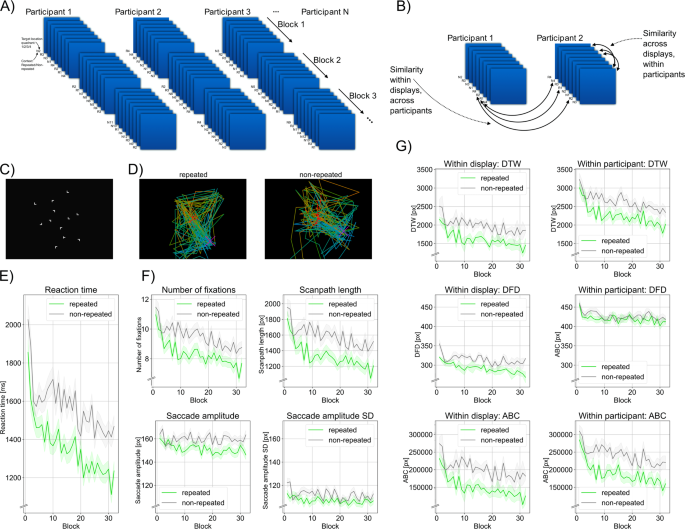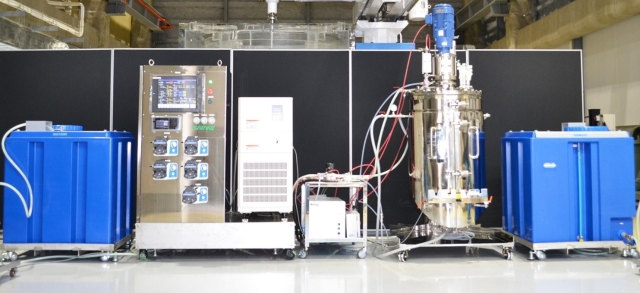2023-09-28 マサチューセッツ工科大学(MIT)
◆アルツハイマー病の潜在的な治療対象を発見するため、MITの研究者たちはアルツハイマー病患者の脳のすべての細胞型で起こるゲノム、エピゲノム、トランスクリプトームの変化についての最も包括的な分析を行いました。
◆400以上の死後の脳サンプルから200万以上の細胞を使用し、アルツハイマー病が進行するにつれて遺伝子発現がどのように乱れるかを分析しました。
◆また、細胞のエピゲノム修飾の変化も追跡し、これらのアプローチを組み合わせて、アルツハイマー病の遺伝子および分子の基盤について最も詳細な情報を提供しました。
<関連情報>
- https://news.mit.edu/2023/decoding-complexity-alzheimers-disease-0928
- https://www.cell.com/cell/fulltext/S0092-8674(23)00973-X
- https://www.cell.com/cell/fulltext/S0092-8674(23)00974-1
- https://www.cell.com/cell/fulltext/S0092-8674(23)00971-6
- https://www.cell.com/cell/fulltext/S0092-8674(23)00972-8
単一細胞アトラスが、アルツハイマー病病理に対する高認知機能、認知症、回復力の相関を明らかにした。 Single-cell atlas reveals correlates of high cognitive function, dementia, and resilience to Alzheimer’s disease pathology
Hansruedi Mathys,Zhuyu Peng,Carles A. Boix,Matheus B. Victor,Noelle Leary,Sudhagar Babu,Ghada Abdelhady,Xueqiao Jiang,Ayesha P. Ng,Kimia Ghafari,Alexander K. Kunisky,Julio Mantero,Kyriaki Galani,Vanshika N. Lohia,Gabrielle E. Fortier,Yasmine Lotfi,Jason Ivey,Hannah P. Brown,Pratham R. Patel,Nehal Chakraborty,Jacob I. Beaudway,Elizabeth J. Imhoff,Cameron F. Keeler,Maren M. McChesney,Haishal H. Patel,Sahil P. Patel,Megan T. Thai,David A. Bennett,Manolis Kellis,Li-Huei Tsai
Cell Published:September 28, 2023
DOI:https://doi.org/10.1016/j.cell.2023.08.039

Highlights
•Single-cell atlas of the aged human prefrontal cortex across 427 individuals
•Coordinated increase of the cohesin complex and DNA damage response factors in AD
•Selectively vulnerable somatostatin inhibitory neuron subtypes are depleted in AD
•Subsets of inhibitory neurons are linked with preserved cognitive function in old age
Summary
Alzheimer’s disease (AD) is the most common cause of dementia worldwide, but the molecular and cellular mechanisms underlying cognitive impairment remain poorly understood. To address this, we generated a single-cell transcriptomic atlas of the aged human prefrontal cortex covering 2.3 million cells from postmortem human brain samples of 427 individuals with varying degrees of AD pathology and cognitive impairment. Our analyses identified AD-pathology-associated alterations shared between excitatory neuron subtypes, revealed a coordinated increase of the cohesin complex and DNA damage response factors in excitatory neurons and in oligodendrocytes, and uncovered genes and pathways associated with high cognitive function, dementia, and resilience to AD pathology. Furthermore, we identified selectively vulnerable somatostatin inhibitory neuron subtypes depleted in AD, discovered two distinct groups of inhibitory neurons that were more abundant in individuals with preserved high cognitive function late in life, and uncovered a link between inhibitory neurons and resilience to AD pathology.
アルツハイマー病のエピゲノム解析で原因変異が特定され、エピゲノムの侵食が明らかになる Epigenomic dissection of Alzheimer’s disease pinpoints causal variants and reveals epigenome erosion
Xushen Xiong,Benjamin T. James,Carles A. Boix,Yongjin P. Park,Kyriaki Galani,Matheus B. Victor,Na Sun,Lei Hou,Li-Lun Ho,Julio Mantero,Aine Ni Scannail,Vishnu Dileep,Weixiu Dong,Hansruedi Mathys,David A. Bennett,Li-Huei Tsai,Manolis Kellis
Cell Published:September 28, 2023
DOI:https://doi.org/10.1016/j.cell.2023.08.040

Highlights
•Brain regulome from 850,000 RNA and ATAC cells in 92 individuals with and without AD
•Methodology to jointly integrate snRNA and snATAC cells and link peaks to genes
•AD risk loci prioritization and interpretation with regulatory links and ATAC-QTLs
•Late-stage AD shows global epigenomic erosion accompanied by cell identity loss
Summary
Recent work has identified dozens of non-coding loci for Alzheimer’s disease (AD) risk, but their mechanisms and AD transcriptional regulatory circuitry are poorly understood. Here, we profile epigenomic and transcriptomic landscapes of 850,000 nuclei from prefrontal cortexes of 92 individuals with and without AD to build a map of the brain regulome, including epigenomic profiles, transcriptional regulators, co-accessibility modules, and peak-to-gene links in a cell-type-specific manner. We develop methods for multimodal integration and detecting regulatory modules using peak-to-gene linking. We show AD risk loci are enriched in microglial enhancers and for specific TFs including SPI1, ELF2, and RUNX1. We detect 9,628 cell-type-specific ATAC-QTL loci, which we integrate alongside peak-to-gene links to prioritize AD variant regulatory circuits. We report differential accessibility of regulatory modules in late AD in glia and in early AD in neurons. Strikingly, late-stage AD brains show global epigenome dysregulation indicative of epigenome erosion and cell identity loss.
アルツハイマー病の進行におけるミクログリアの状態動態 Human microglial state dynamics in Alzheimer’s disease progression
Na Sun,Matheus B. Victor,Yongjin P. Park,Xushen Xiong,Aine Ni Scannail,Noelle Leary,Shaniah Prosper,Soujanya Viswanathan,Xochitl Luna,Carles A. Boix,Benjamin T. James,Yosuke Tanigawa,Kyriaki Galani,Hansruedi Mathys,Xueqiao Jiang,Ayesha P. Ng,David A. Bennett,Li-Huei Tsai,Manolis Kellis
Cell Published:September 28, 2023
DOI:https://doi.org/10.1016/j.cell.2023.08.037

Highlights
•Single-nucleus transcriptomes and epigenomes of human microglia
•Microglia state-specific and disease-stage-specific profile in Alzheimer’s disease
•Chromatin accessibility poorly captured microglia transcriptional state diversity
•Transcription factor networks regulate microglial states and their transitions
Summary
Altered microglial states affect neuroinflammation, neurodegeneration, and disease but remain poorly understood. Here, we report 194,000 single-nucleus microglial transcriptomes and epigenomes across 443 human subjects and diverse Alzheimer’s disease (AD) pathological phenotypes. We annotate 12 microglial transcriptional states, including AD-dysregulated homeostatic, inflammatory, and lipid-processing states. We identify 1,542 AD-differentially-expressed genes, including both microglia-state-specific and disease-stage-specific alterations. By integrating epigenomic, transcriptomic, and motif information, we infer upstream regulators of microglial cell states, gene-regulatory networks, enhancer-gene links, and transcription-factor-driven microglial state transitions. We demonstrate that ectopic expression of our predicted homeostatic-state activators induces homeostatic features in human iPSC-derived microglia-like cells, while inhibiting activators of inflammation can block inflammatory progression. Lastly, we pinpoint the expression of AD-risk genes in microglial states and differential expression of AD-risk genes and their regulators during AD progression. Overall, we provide insights underlying microglial states, including state-specific and AD-stage-specific microglial alterations at unprecedented resolution.
神経細胞DNAの二本鎖切断が神経変性におけるゲノム構造変異と3次元ゲノム破壊を引き起こす Neuronal DNA double-strand breaks lead to genome structural variations and 3D genome disruption in neurodegeneration
Vishnu Dileep,Carles A. Boix,Hansruedi Mathys,Asaf Marco,Gwyneth M. Welch,Hiruy S. Meharena,Anjanet Loon,Ritika Jeloka,Zhuyu Peng,David A. Bennett,Manolis Kellis,Li-Huei Tsai
Cell Published:September 28, 2023
DOI:https://doi.org/10.1016/j.cell.2023.08.038

Highlights
•Increased somatic mosaic gene fusions in excitatory neurons in Alzheimer’s disease
•DNA double-strand breaks lead to mosaic gene fusions and genome structural variations
•Changes in 3D genome organization in neurons enriched for DNA double-strand breaks
•3D genome changes align with differential gene expression in neurodegeneration
Summary
Persistent DNA double-strand breaks (DSBs) in neurons are an early pathological hallmark of neurodegenerative diseases including Alzheimer’s disease (AD), with the potential to disrupt genome integrity. We used single-nucleus RNA-seq in human postmortem prefrontal cortex samples and found that excitatory neurons in AD were enriched for somatic mosaic gene fusions. Gene fusions were particularly enriched in excitatory neurons with DNA damage repair and senescence gene signatures. In addition, somatic genome structural variations and gene fusions were enriched in neurons burdened with DSBs in the CK-p25 mouse model of neurodegeneration. Neurons enriched for DSBs also had elevated levels of cohesin along with progressive multiscale disruption of the 3D genome organization aligned with transcriptional changes in synaptic, neuronal development, and histone genes. Overall, this study demonstrates the disruption of genome stability and the 3D genome organization by DSBs in neurons as pathological steps in the progression of neurodegenerative diseases.


